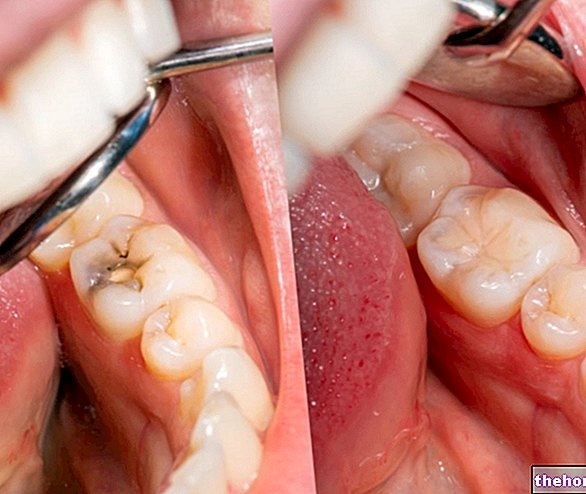Conservative interventions
Devitalization and obturation are two so-called dental procedures conservative, or aimed at healing a "dental infection by avoiding more disastrous interventions such as the extraction of the diseased tooth."

During the article we will try to highlight the characteristic elements of each intervention, focusing also and above all on the differences.
Generality
Given that devitalization and obturation are included in the list of conservative interventions, let's see in detail for what purpose they are performed.
DEVITALIZATION
It is a dental intervention aimed at destroying and removing the pulp of a tooth severely damaged by extensive cariogenic processes, dental pulp infections or high-grade trauma. After removing the diseased pulp from the previously anesthetized tooth, the devitalization proceeds with the sealing of the pulp canal through specific biocompatible materials or cements: this procedure is essential to protect the tooth from a "possible spread of the infection" in the adjacent dental tissues.

From Wikipedia: the various stages of dental devitalization. A) Sick or damaged tooth. B) Trepanation and cleaning. C) Elimination of vessels and nerves up to the apex of the tooth with root canal files (endodontic "files"). D) filling with gutta-percha and covering with prosthetic crown (capsule)
FILLING

After anesthesia, the carious tooth is healed through the removal of dental caries, always performed with special burs; subsequently, the created groove is adequately filled with amalgams or specific resins.
Comparison
At this point, some questions spontaneously arise: why can't decayed teeth always be healed through simple filling? Under what circumstances is devitalization necessary?
Basically, the choice of one intervention rather than another is established based on the severity of the underlying dental infection. Both dental procedures can be performed to restore the structural integrity of a tooth infected with caries: what makes the difference is the depth of the cariogenic process. Superficial caries or caries that go as far as dentin are generally healed by simple filling: in these cases the dental pulp is not involved, therefore the tooth retains and maintains its complete vitality.
Otherwise, a deep and particularly extensive caries beyond the dental pulp (pulpitis) cannot be treated through a banal filling: in such situations, devitalization is the treatment of first choice.
Indications
Caries is not the only dental infection treatable by devitalization or filling. The table lists (in alphabetical order and not of importance) the dental pathologies that can be treated with these interventions.
Indications of devitalization
Indications of the obturation
- Dental abscess (some)
- Very extensive and deep caries
- Correction of a failed dental procedure
- Teeth that require encapsulation
- Broken teeth
- Badly chipped teeth
- Pulpitis (mostly)
- Relieve toothache
- Mild to moderate caries
- Chipped tooth, recoverable by simple filling
- Prevention of a further cariogenic process
- Sealing of dental spaces where bacteria could enter
Carious wisdom tooth
One of the priority objectives of modern dentistry is to protect the integrity of decayed or infected teeth for as long as possible by filling, devitalization or other conservative practices (eg apicoectomy, in the case of granuloma or dental cyst). However, what has been said is not generally applied in some precise circumstances: it is the case of wisdom teeth. Generally, when one of the third molars is involved in infectious processes - be it simple caries or more serious infections - the dentist suggests the extraction of the tooth. of judgment in its natural position, this being practically useless for the purposes of chewing and the aesthetics of the smile. But that's not all. Many dentists recommend extracting wisdom teeth even if in perfect health conditions (especially if included): purpose is to prevent any and possible future disorders, first of all crooked teeth or dental malocclusion.
Conclusions
The choice of restoring an infected tooth by devitalization or filling rests exclusively with the doctor. Before proceeding with an intervention, the specialist must in fact consider the patient's state of health, the severity of the infection and any requests from the client, and therefore act accordingly.
After a devitalization or an obturation, the dentist must carefully educate the patient on the correct behavior to follow in order to minimize the risk of post-surgery complications.
To conclude, we remind you that a correct multi-daily oral hygiene (performed with regular expertise using toothbrush, toothpaste and dental floss), supported by professional dental cleaning every 6-12 months, is an intelligent prophylactic strategy to preserve the health of the teeth. By doing so, it is possible to escape from dental interventions such as devitalization and obturation which, although simple and relatively painless, always feed discomfort and tension in the patient.























-nelle-carni-di-maiale.jpg)




